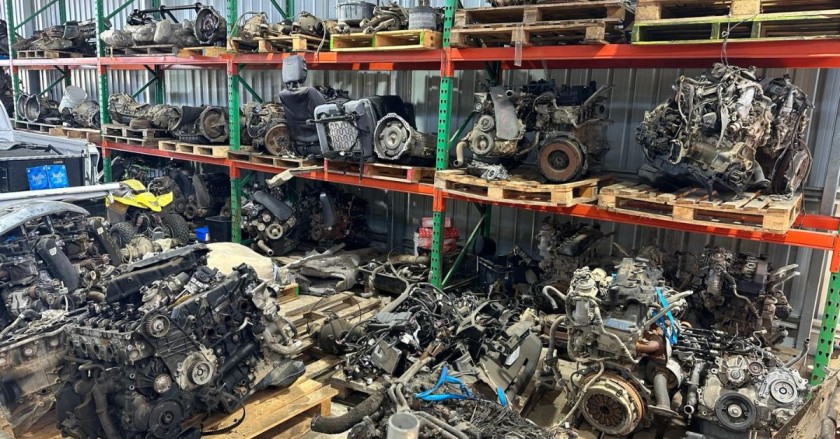The scrap metal business is one of the oldest and most resilient industries in the world. From ancient blacksmiths reusing bronze to today’s industrial recycling giants processing tons of waste, scrap metal plays a crucial role in the global economy and the environment. But how does this seemingly straightforward business actually work?
Whether you’re curious about starting a scrap metal business or just want to understand how your old appliances become new products, this blog will give you a detailed look at how the scrap metal industry operates, step-by-step.
1. What Is Scrap Metal?
Scrap metal refers to metal that is no longer in use and is suitable for recycling. Unlike waste, scrap has monetary value and is often collected, sorted, sold, and reused to create new products. Recycling metal reduces the need for mining, saves energy, and decreases environmental pollution.
2. Types of Scrap Metal
There are two main categories:
a. Ferrous Metals
These contain iron and are magnetic. Common examples include:
- Steel
- Cast iron
- Wrought iron
Ferrous metals are widely used in construction and manufacturing.
b. Non-Ferrous Metals
These do not contain iron and are generally more valuable. Examples include:
- Copper
- Aluminum
- Brass
- Lead
- Zinc
- Stainless steel
Non-ferrous metals are often used in electronics, automotive parts, and specialized machinery.
3. The Lifecycle of Scrap Metal
Here’s how scrap metal moves through the system:
- Collection: Individuals, businesses, or demolition sites generate scrap.
- Sorting: Scrap is sorted manually or with machines using magnets and sensors.
- Processing: The metal is cleaned and cut/shredded into manageable sizes.
- Melting and Purification: It’s melted in a furnace and purified to remove impurities.
- Re-Forming: The purified metal is poured into molds or rolled into sheets and sold to manufacturers.
- Re-Manufacturing: The recycled metal is used to make new products.
This circular economy helps reduce raw material usage and environmental degradation.
4. Where Scrap Metal Comes From
Scrap metal originates from various sources:
- Household waste: Appliances, bikes, wires
- Construction and demolition: Rebar, pipes, beams
- Industrial waste: Machinery, factory scrap
- End-of-life vehicles: Cars are a major source of steel and aluminum
- Electronic waste (e-waste): Contains copper, gold, and rare metals
Scrap dealers often partner with businesses or municipalities to collect these materials.
5. The Business Model of Scrap Yards
Scrap metal businesses make money by buying low and selling high.
Revenue Streams:
- Buying scrap at low prices from the public or companies
- Sorting and processing scrap to improve its value
- Selling bulk metal to recycling plants or smelters
- Exporting scrap to international buyers, especially in metal-hungry countries like China and India
Key Partners:
- Metal brokers
- Construction and demolition companies
- Automotive repair shops
- Municipal recycling programs
Business Types:
- Scrap Metal Collectors: Small-scale individuals or companies collecting metal for profit
- Scrap Yards (Dealers): Buy, sort, and sell metal on a larger scale
- Scrap Processors: Shred and prepare scrap for steel mills and foundries
6. Equipment and Infrastructure Needed
To run a successful scrap yard, significant infrastructure and equipment are needed:
- Weighing Scales: To weigh incoming and outgoing materials
- Magnet Separators: To distinguish ferrous from non-ferrous metals
- Shears and Shredders: For cutting large pieces into manageable sizes
- Balers: For compacting metals for easier transport
- Forklifts/Excavators: For moving heavy materials
- Storage Bins: For sorted metals
- Safety Gear: Helmets, gloves, and high-visibility clothing
7. Legal and Environmental Considerations
Operating a scrap metal business involves navigating several laws and regulations:
Licenses and Permits:
- Business license
- Scrap dealer registration
- Environmental permits (for waste handling)
Compliance:
- Reporting to local authorities for certain high-value or stolen metals
- Proper disposal of hazardous materials (like batteries or refrigerants)
- Following Occupational Safety and Health Administration (OSHA) rules
Neglecting compliance can lead to heavy fines or business shutdown.
8. Challenges in the Scrap Metal Industry
Like any business, the scrap industry faces several challenges:
- Price Volatility: Metal prices are tied to global markets and can swing dramatically.
- Theft: Scrap metal theft is common, requiring extra diligence and documentation.
- Environmental Regulations: Compliance is necessary but can be expensive.
- Competition: Larger players may outcompete smaller yards through economies of scale.
Staying competitive means efficient operations, strong partnerships, and consistent quality.
9. Profitability and Market Trends
Despite its challenges, the scrap metal business can be highly profitable. Margins are strongest in non-ferrous metals, particularly copper and aluminum. Global trends such as urbanization, infrastructure development, and sustainability are increasing demand for recycled materials.
Current Trends:
- Green Economy: Recycling is being incentivized by governments worldwide.
- Tech Integration: Use of AI and automation in sorting is on the rise.
- E-Waste Recycling: A fast-growing niche with high returns due to valuable rare metals.
10. Tips for Getting Started in the Scrap Metal Business
If you’re considering entering this field, here are some practical tips:
- Start Small: Begin as a collector or partner with a local yard.
- Learn Metal Grades: The more you know, the better deals you can make.
- Invest in a Good Scale: Accuracy is key for trust and profit.
- Network: Build relationships with businesses that produce metal waste.
- Stay Informed: Watch commodity markets and regulatory changes.
- Focus on Safety: Metal handling is dangerous — prioritize training and PPE.
Final Thoughts
The scrap metal business is more than just a junkyard operation. It’s a complex, dynamic industry that touches on environmental sustainability, global trade, and industrial production. While it’s not without its challenges, with the right knowledge and planning, it offers real opportunities for entrepreneurship and growth.
Whether you’re interested in starting a side hustle, launching a full-scale operation, or just understanding the industry better, the scrap metal business proves that one person’s trash can truly be another’s treasure.



